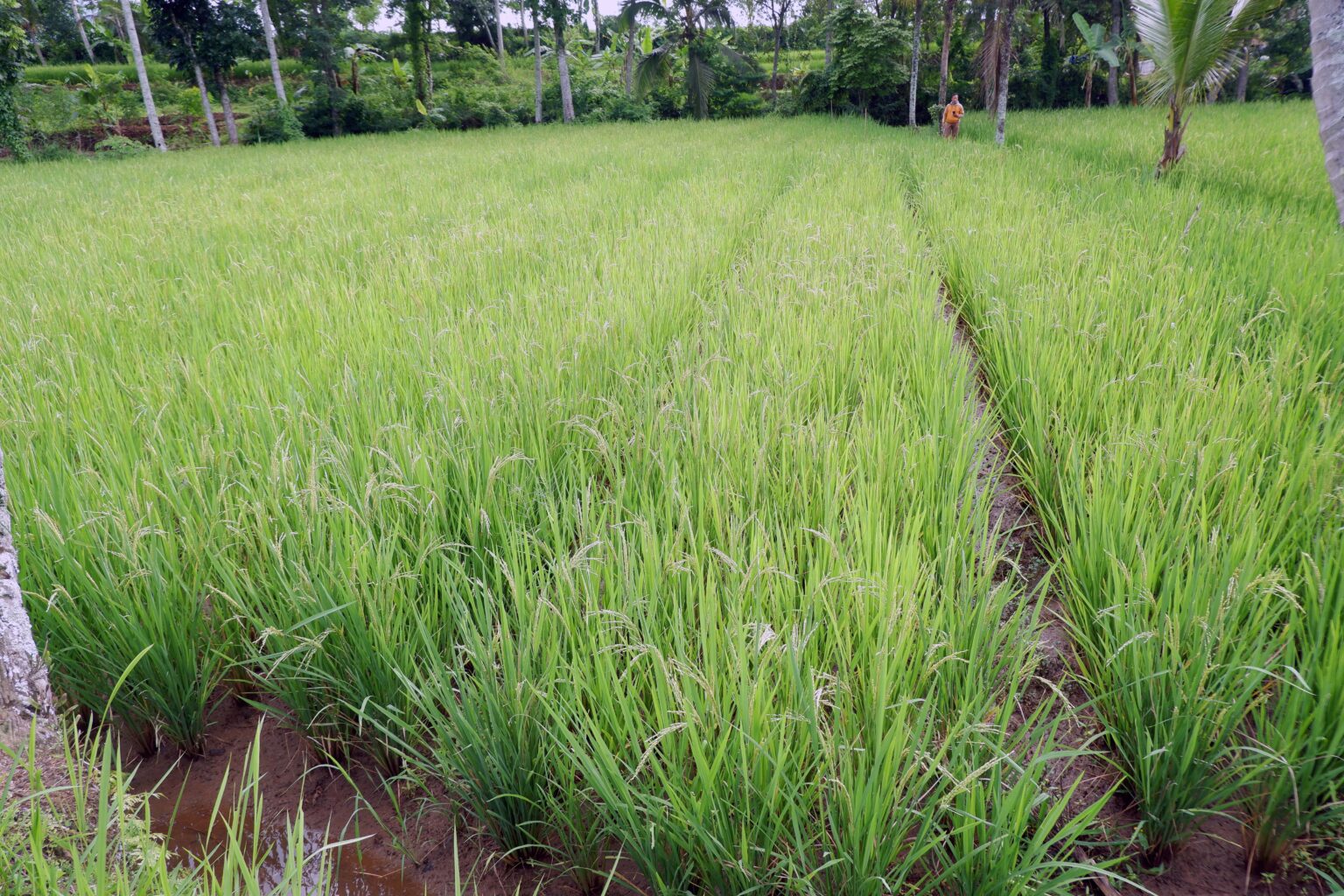SRI Method


Definition
System of Rice Intensification (SRI) is an agroecological approach to rice cultivation that minimizes inter-plant competition, plants single rice seedlings, uses organic matter, improves soil air circulation, and optimizes water management to create optimal conditions for healthy plant growth. These practices allow rice plants to express their genetic potential more fully and enhance plant growth with yields up to three times higher compared to conventional cultivation methods, while increasing plant resistance to biotic and abiotic stresses.
SRI modifies conventional agriculture in several ways including:
With an Age of about 10-12 days and no more than 15 days.
This promotes healthy root growth as competition for nutrients is reduced and stimulates lush tillering.
Aimed at improving soil fertility by avoiding the use of chemical fertilizers.
Replacing the traditional method of using flooded irrigation, intermittent irrigation supports sustainable agriculture as the soil becomes more aerobic.
Fertilizers can be applied in areas that lack organic matter to meet the needs of the soil and plants. However, its effectiveness will increase if the organic matter reserves in the soil are also increased. When organic nutrient sources are limited or the soil has certain deficiencies, a combination of organic and inorganic nutrients can be optimized. The goal is not only to support plant growth, but also to support the soil microbial community.
SRI management in rice fields includes: (a) Replanting seedlings that are 10-12 days old. (b) When preparing the crop, a grid pattern (25 × 25 or 30 × 30 cm) is characterized on the surface of the paddy field. At each grid point, only one seedling is planted. After being removed from the nursery, the seedlings are immediately planted to a depth of less than 1 cm. (c) In terms of soil management, the surface is aerated using a two-row rake or cono-weeder every 10-12 days until the canopy is covered. This process provides oxygen to the root system and to aerobic soil biota, while simultaneously controlling weeds. (d) For water management, the soil is kept moist but free from constant waterlogging.
Benefits
The SRI method has various benefits in agriculture. Not only does it increase rice production, it also contributes to soil biodiversity, strengthens plant resistance to pests and minimizes arsenic absorption. In addition, SRI promotes the preservation of traditional rice varieties. While thousands of traditional varieties have become extinct, this method provides financial incentives for farmers to return to planting local, indigenous or traditional varieties. With SRI, production of these varieties is not only more profitable in terms of yield, but also in terms of production costs. Traditional varieties are often priced higher in the market due to consumer tastes, so while yields may not be on par with modern varieties, profits can be greater. Another benefit of SRI is improved soil and water quality. For reference, the table below presents the differences between SRI and conventional rice crop management.
SRI vs Conventional Comparison Table
| Characteristics | SRI | Conventional |
|---|---|---|
| Seedling age | Younger seedlings (<15 days) | Older seedlings (>20 days) |
| Planting distance | Planted separately with a wide spacing of 25 x 25 cm, in a square pattern. | 3 or more seedlings are planted in one planting hole placed closer to each other |
| Irrigation | Use an intermittent system to keep soil conditions aerobic | Using a flooded system with plants kept submerged |
| Weed control | Mechanical weed control | Herbicide usage |
| Fertilizer | Organic fertilizer | Chemical fertilizer |




